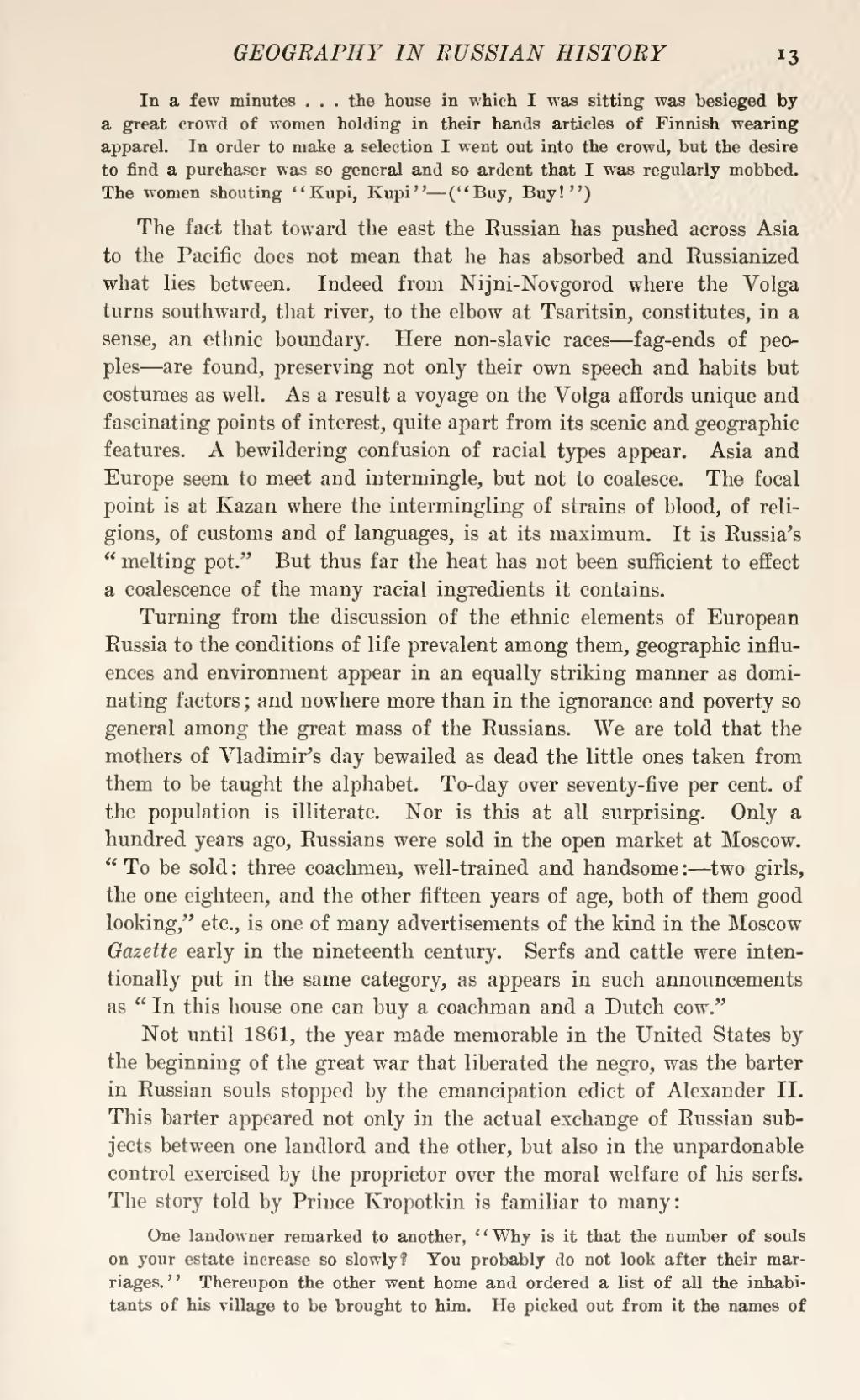The fact that toward the east the Russian has pushed across Asia to the Pacific does not mean that he has absorbed and Russianized what lies between. Indeed from Nijni-Novgorod where the Volga turns southward, that river, to the elbow at Tsaritsin, constitutes, in a sense, an ethnic boundary. Here non-slavic races—fag-ends of peoples—are found, preserving not only their own speech and habits but costumes as well. As a result a voyage on the Volga affords unique and fascinating points of interest, quite apart from its scenic and geographic features. A bewildering confusion of racial types appear. Asia and Europe seem to meet and intermingle, but not to coalesce. The focal point is at Kazan where the intermingling of strains of blood, of religions, of customs and of languages, is at its maximum. It is Russia's "melting pot." But thus far the heat has not been sufficient to effect a coalescence of the many racial ingredients it contains.
Turning from the discussion of the ethnic elements of European Russia to the conditions of life prevalent among them, geographic influences and environment appear in an equally striking manner as dominating factors; and nowhere more than in the ignorance and poverty so general among the great mass of the Russians. We are told that the mothers of Vladimir's day bewailed as dead the little ones taken from them to be taught the alphabet. To-day over seventy-five per cent, of the population is illiterate. Nor is this at all surprising. Only a hundred years ago, Russians were sold in the open market at Moscow. "To be sold: three coachmen, well-trained and handsome:—two girls, the one eighteen, and the other fifteen years of age, both of them good looking," etc., is one of many advertisements of the kind in the Moscow Gazette early in the nineteenth century. Serfs and cattle were intentionally put in the same category, as appears in such announcements as "In this house one can buy a coachman and a Dutch cow."
Not until 1861, the year made memorable in the United States by the beginning of the great war that liberated the negro, was the barter in Russian souls stopped by the emancipation edict of Alexander II. This barter appeared not only in the actual exchange of Russian subjects between one landlord and the other, but also in the unpardonable control exercised by the proprietor over the moral welfare of his serfs. The story told by Prince Kropotkin is familiar to many:
